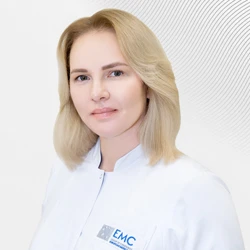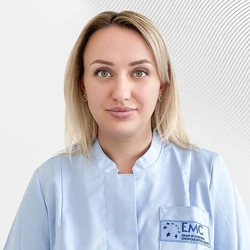Tells Vera Zarubina, child geneticist
Epilepsy is a fairly common pathology of childhood. The range of diseases in which epileptic seizures can develop is extremely diverse: from the effects of intoxication, infections, and injuries to hereditary pathology. The latter deserves special attention, because the diagnosis affects not only the prognosis in the family, but also in some cases changes the tactics of treatment. In this case, epilepsy usually debuts in childhood and is considered symptomatic.
The main groups of hereditary diseases accompanied by symptomatic epilepsy are:
- Epilepsy associated with chromosomal disorders: Down, Angelman, Wolf-Hirshhorn syndromes, brittle X chromosomes, ring 14 and 20 chromosomes, etc.
- Epilepsy with malformations of the brain (with malformations of the cortex): tuberous sclerosis, lissencephaly, polymicrogyria, etc.
- Monogenic diseases: hereditary metabolic diseases, neurocutaneous diseases (tuberous sclerosis, neurofibromatosis, Sturge-Weber syndrome, etc.), etc.
- Mitochondrial diseases (MERRF, MELAS, Lee syndromes, etc.).
Epilepsy with chromosomal pathology
Almost all chromosomal abnormalities lead to anatomical and functional damage to the central nervous system (CNS) and are accompanied by a delay in psychomotor and intellectual development. Anomalies can be caused by both quantitative and qualitative changes on the part of the chromosomes. Epileptic seizures are often observed with chromosomal aberrations, especially when unbalanced chromosomal rearrangements occur.
It should be noted that in this case, making a diagnosis will not significantly change the tactics of management, however, it is an important component in family counseling and determining the prognosis for subsequent pregnancies.
Below are some examples of chromosomal abnormalities, the most common symptoms of which are epileptic seizures.
Angelman syndrome. It develops when some genes of the long arm of chromosome 15 are missing. It is characterized by such signs as:
- characteristic facial features: wide mouth, sparsely spaced teeth, protruding chin, tongue sticking out;
- unusual movements (small tremors, chaotic movements of limbs);
- frequent laughter for no reason; walking stiff—legged - because of this feature, children with this syndrome have sometimes been compared to puppets.
Wolf-Hirshhorn syndrome caused by deletion of the short arm of chromosome 4. It includes:
- characteristic facial features: increased distance between the eye slits, enlarged beak-shaped nose, the face often looks like a Greek helmet;
- ear deformity;
- malformations of internal organs (heart, genitourinary system);
- abnormalities of the musculoskeletal system.
The syndrome Martin—Bell (brittle X chromosome syndrome), develops due to a disorder in the gene FMR1, which is located on the X chromosome and plays an important role in the appearance and development of neural connections, learning and memorization. These changes are the most common known causes of inherited intellectual disability. The syndrome includes symptoms such as:
- a large head with a high and wide forehead;
- long face with enlarged chin;
- slightly flattened middle part of the face;
- ears are large, protruding, low-set;
- the hands and feet are wide;
- joints have increased mobility;
- testicular enlargement.
Epilepsy in hereditary metabolic diseases
This group of diseases is the most interesting, because these pathologies can occur under the "masks" of other diseases.: epilepsy, perinatal pathology, cerebral palsy, neuroinfection. However, a number of them are amenable to pathogenetic therapy, and timely diagnosis can dramatically change the prognosis and treatment tactics.
What are the characteristics of hereditary diseases from the group of metabolic disorders?
- in most cases, they make their debut in infancy and early childhood;
- are accompanied by damage to the central nervous system;
- in the absence of therapy, diseases progress rapidly;
- if substitution therapy is possible, it is a positive response.
When is there a reason to turn to a geneticist?
- closely related marriage;
- a history of infant mortality, a history of neurological diseases;
- positive family history;
- excessive fetal movements during pregnancy (intrauterine seizures);
- unusual urine and body odors;
- severe metabolic acidosis;
- the presence of other neurological features: gait disorder, ataxia, spasticity;
- damage to more than one system: hepatosplenomegaly, retinitis pigmentosa; seizures that occur or go away during fasting or are associated with a high-protein diet.
The following are examples of diseases from the group of hereditary metabolic disorders for which pathogenetic therapy has been developed.
The first of them is biotinidase deficiency, in which, due to a mutation in the BTD gene, the synthesis of the biotinidase enzyme is disrupted, which leads to disruption of the work of many enzymes. As a result, there is no cleavage of substrates and toxic metabolites accumulate.
Clinical manifestations depend on the residual activity of the enzyme and are characterized, in addition to epileptic seizures, by the following symptoms:
- Seborrhea
- Atopic dermatitis
- Nesting and/or total alopecia
- Persistent conjunctivitis
- Delayed psychomotor development
- Ataxia
Treatment: the main method of pathogenetic therapy is taking vitamin biotin, which is also called vitamin B7 or H.
The cause of the disease is a defect in the SLC2A1 gene, which encodes the GLUT1 protein, a type 1 glucose transporter responsible for delivering glucose from the blood to the brain through the blood-brain barrier. Mutations in the SLC2A1 gene disrupt the function of the GLUT1 protein, as a result, the brain is deprived of its main source of energy, glucose, which leads to a progressive impairment of its functions and the appearance of appropriate clinical symptoms. The clinical manifestations of this disease include:
- Microcephaly
- Spasticity
- Ataxia
- Dysarthria
- Alternating hemiplegia
Seizures are triggered by physical exertion, hunger, or increased intervals between meals.
Treatment: ketogenic diet, high-fat, low-carb diet. At the same time, the synthesis of ketone bodies, water-soluble compounds capable of penetrating the blood-brain barrier through another transporter protein, begins from fats. As an alternative source of energy, they contribute to the restoration of metabolic processes, thereby preventing further brain damage.
Another disease often accompanied by epilepsy is Glutaric aciduria, type 1. It is caused by mutations in the gene encoding the enzyme glutaryl-CoA dehydrogenase (GCDH). Deficiency of this enzyme leads to the accumulation of glutaric and 3-OH-glutaric (3-hydroxyglutaric) acids in biological fluids and tissues, which have a neurotoxic effect mainly on the subcortical structures of the brain. Clinical symptoms worth paying attention to:
- Macrocephaly
- Prominent frontal protuberances
- Feeding disorders
- Loss of skills
- Hyperkinetic form of cerebral palsy
- Periodic ataxia
Treatment: diet therapy with the exception of high-protein foods rich in lysine and tryptophan, the use of specialized products based on mixtures of amino acids without pathogenetically significant amino acids, the appointment of L-carnitine, riboflavin.
In conclusion, I would like to say that epileptic seizures are common symptoms of hereditary pathology, but hereditary diseases are a rare cause of epilepsy, this should be taken into account, and this should not be forgotten!
Author: Vera Zarubina, child geneticist












.webp)




.webp)







